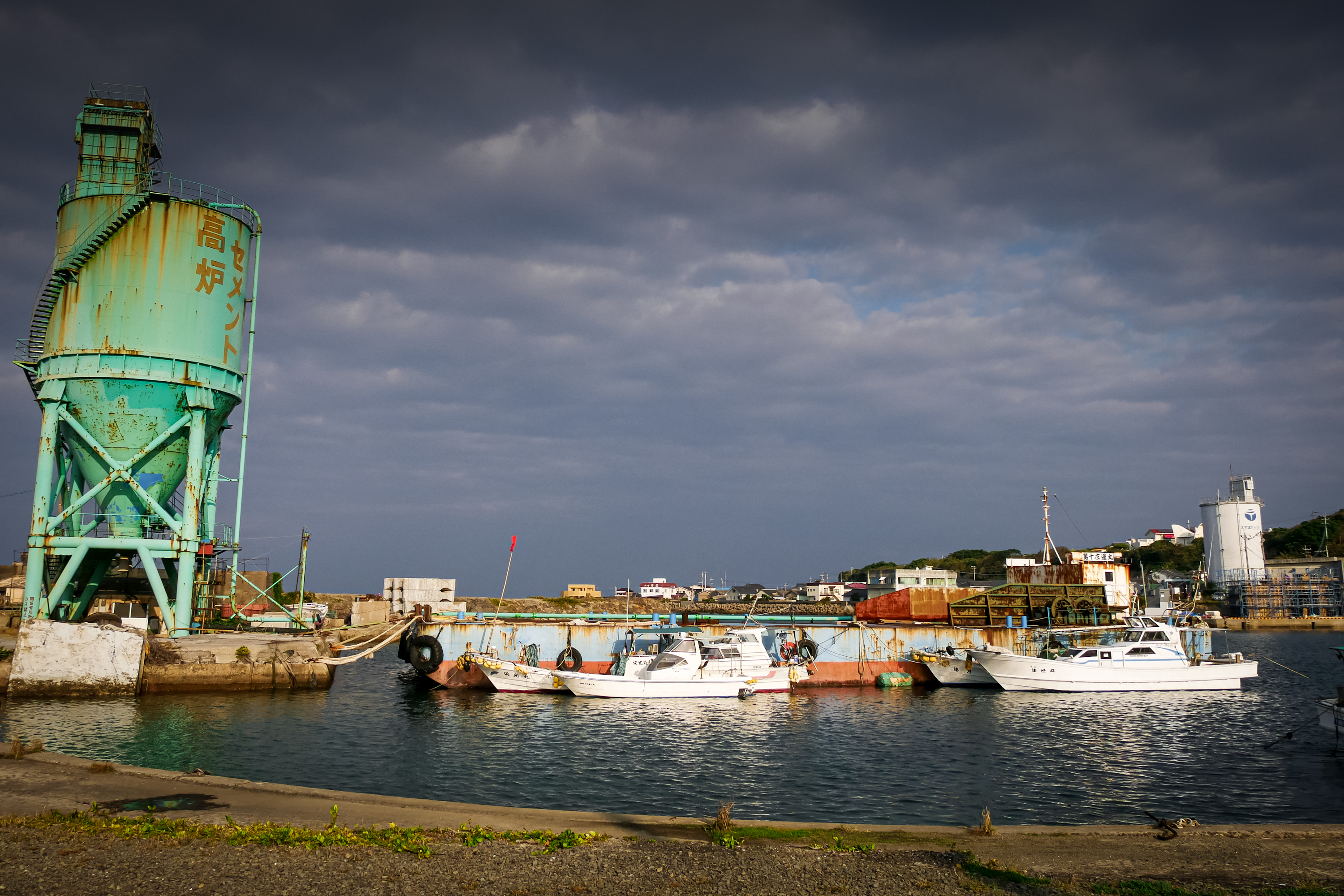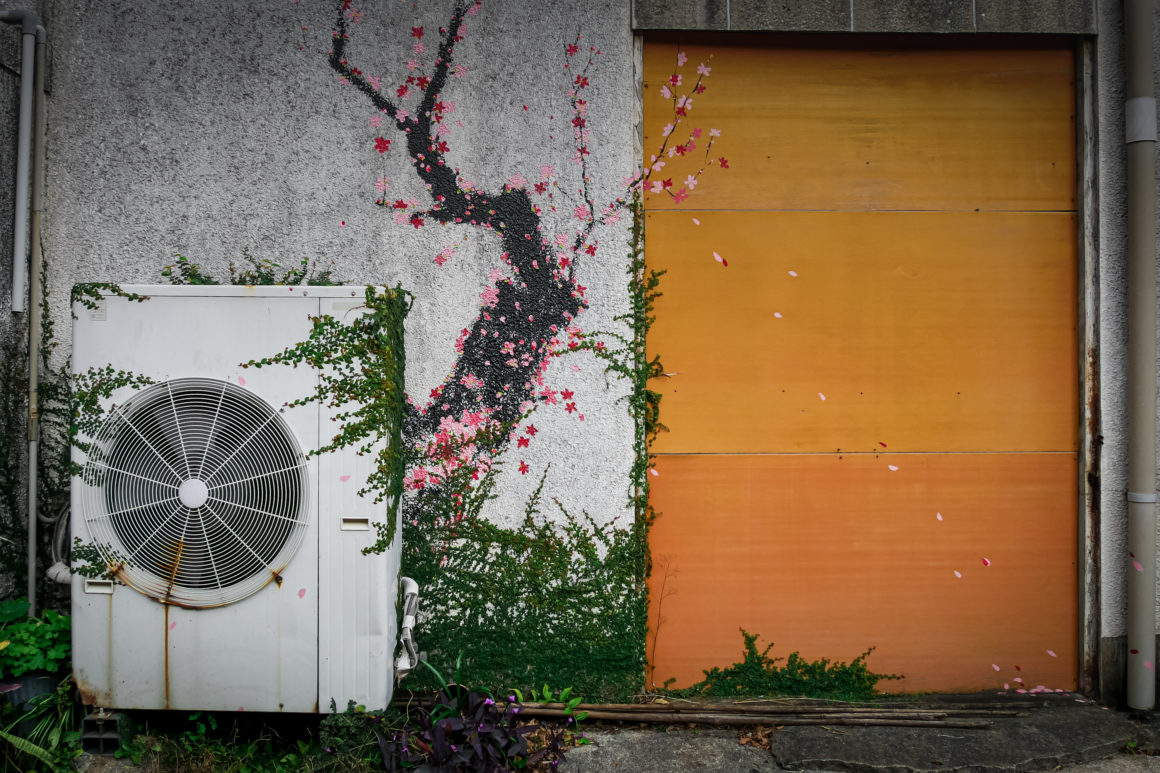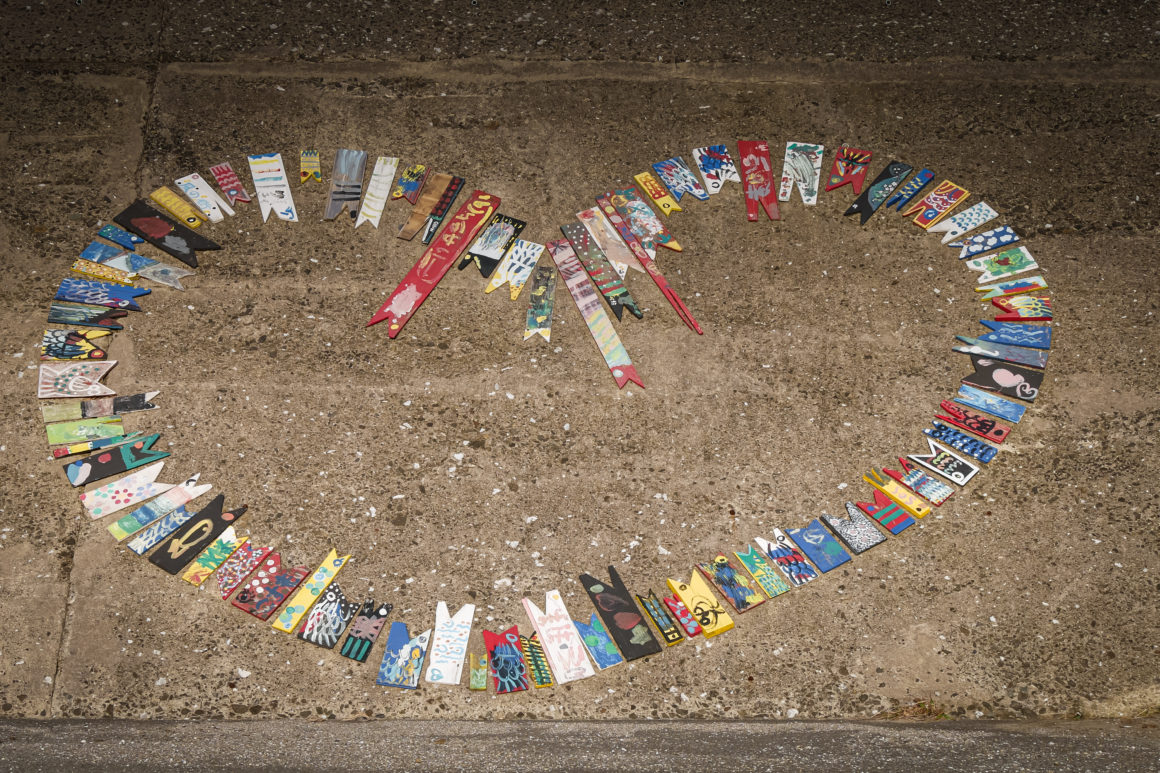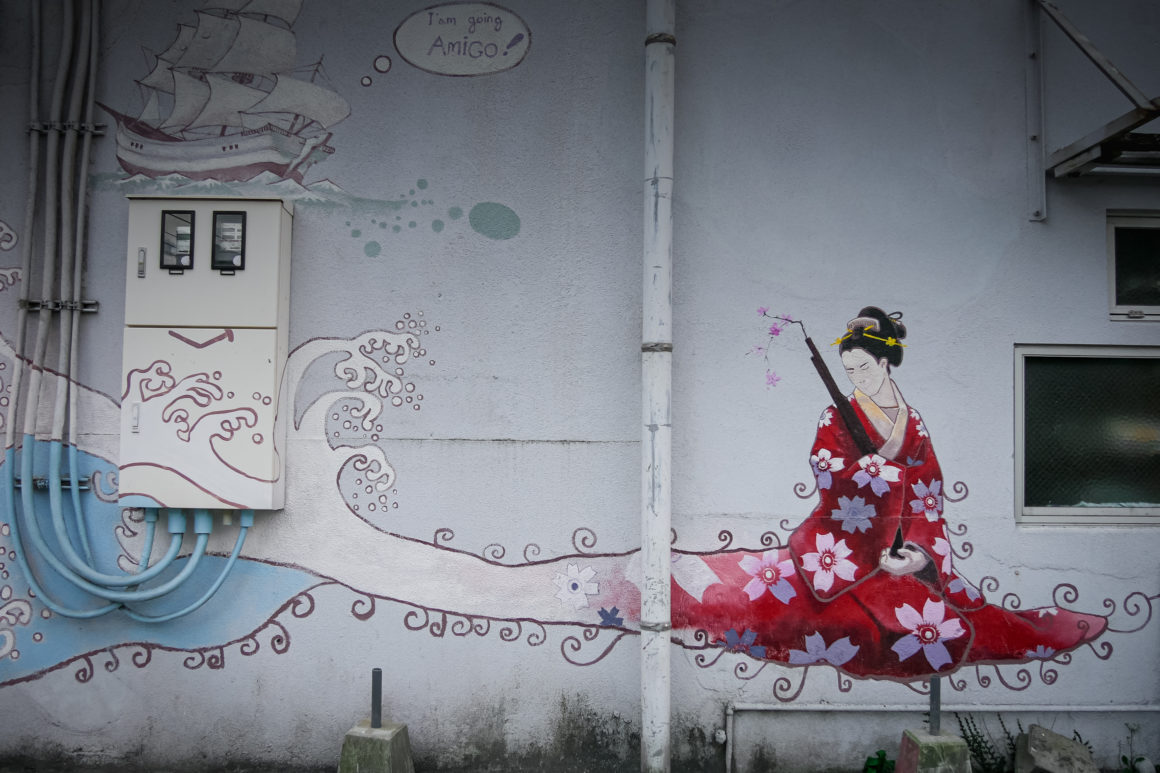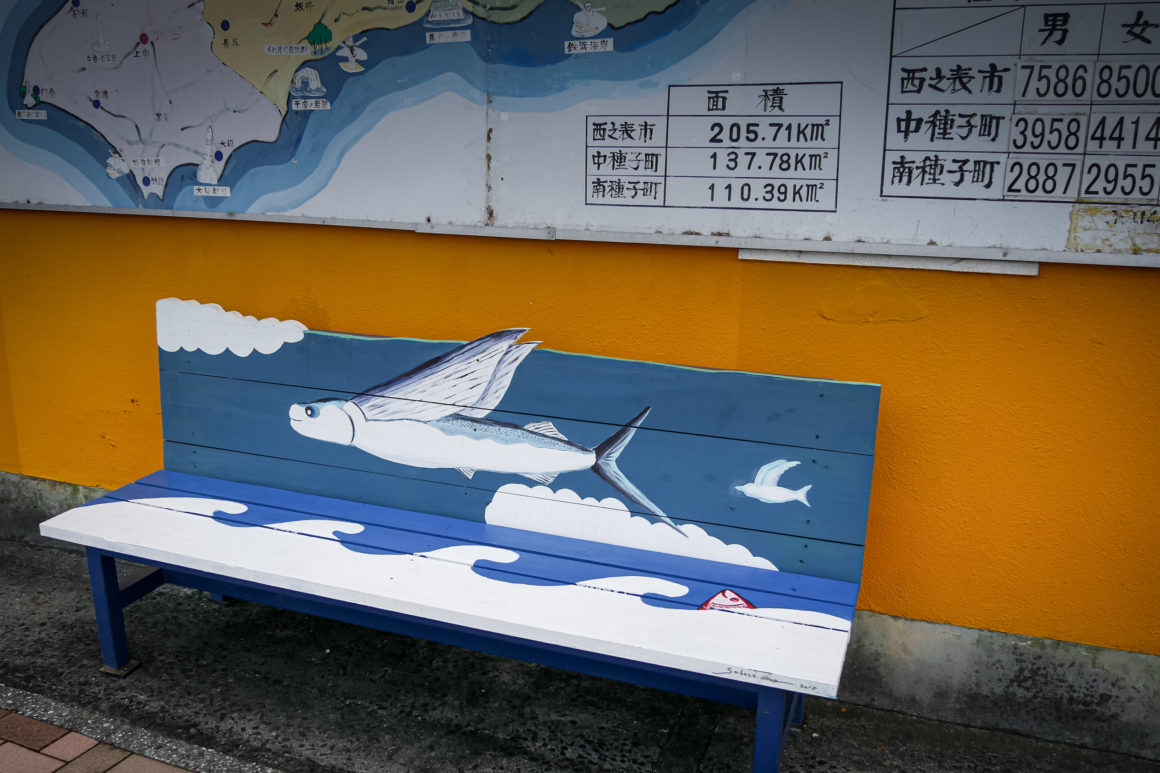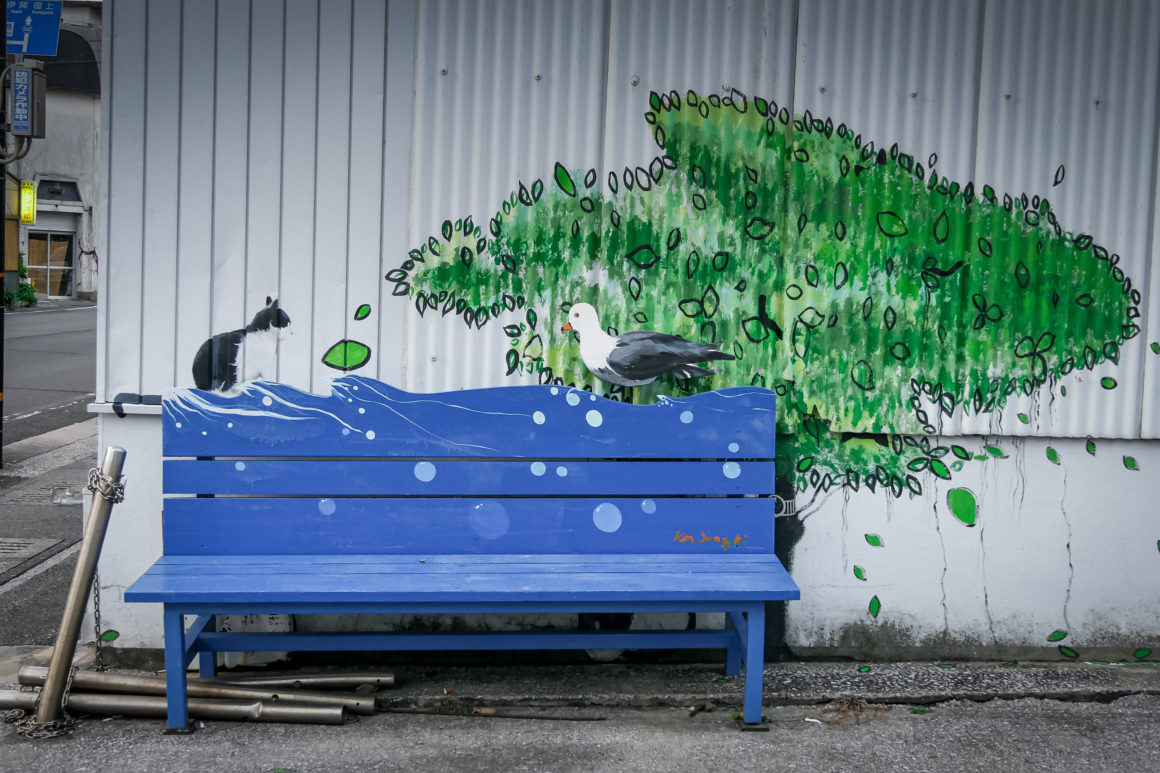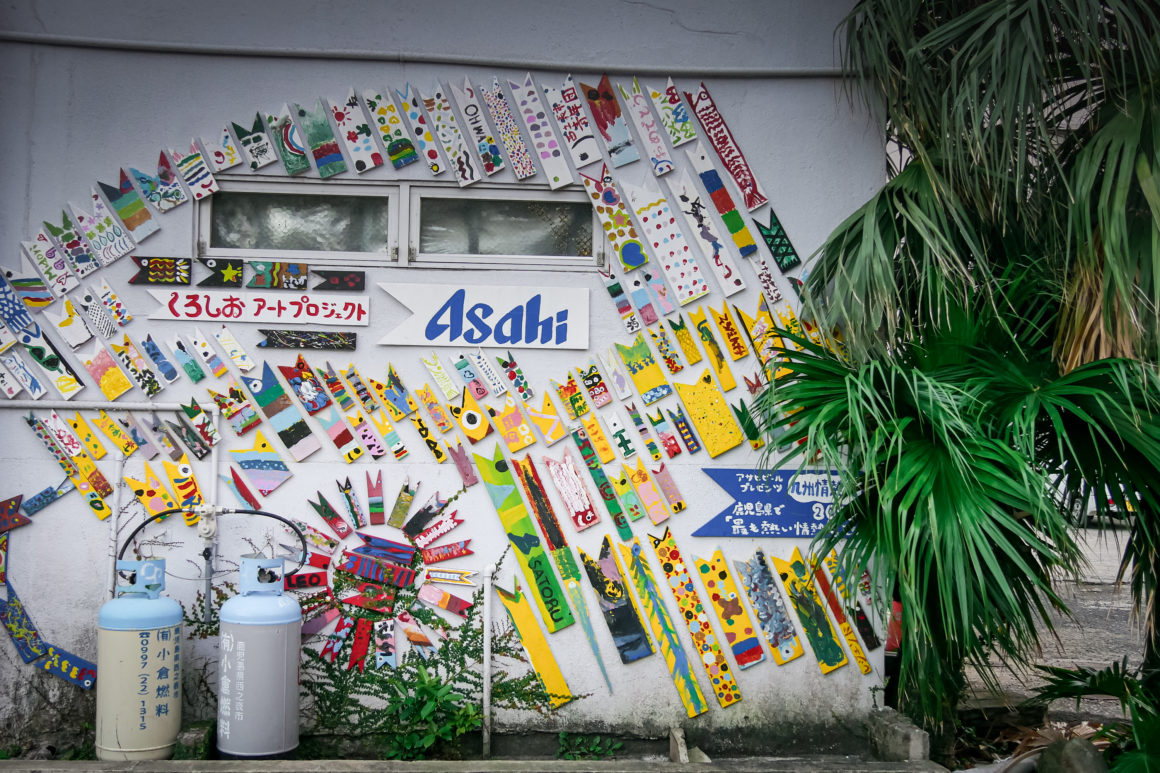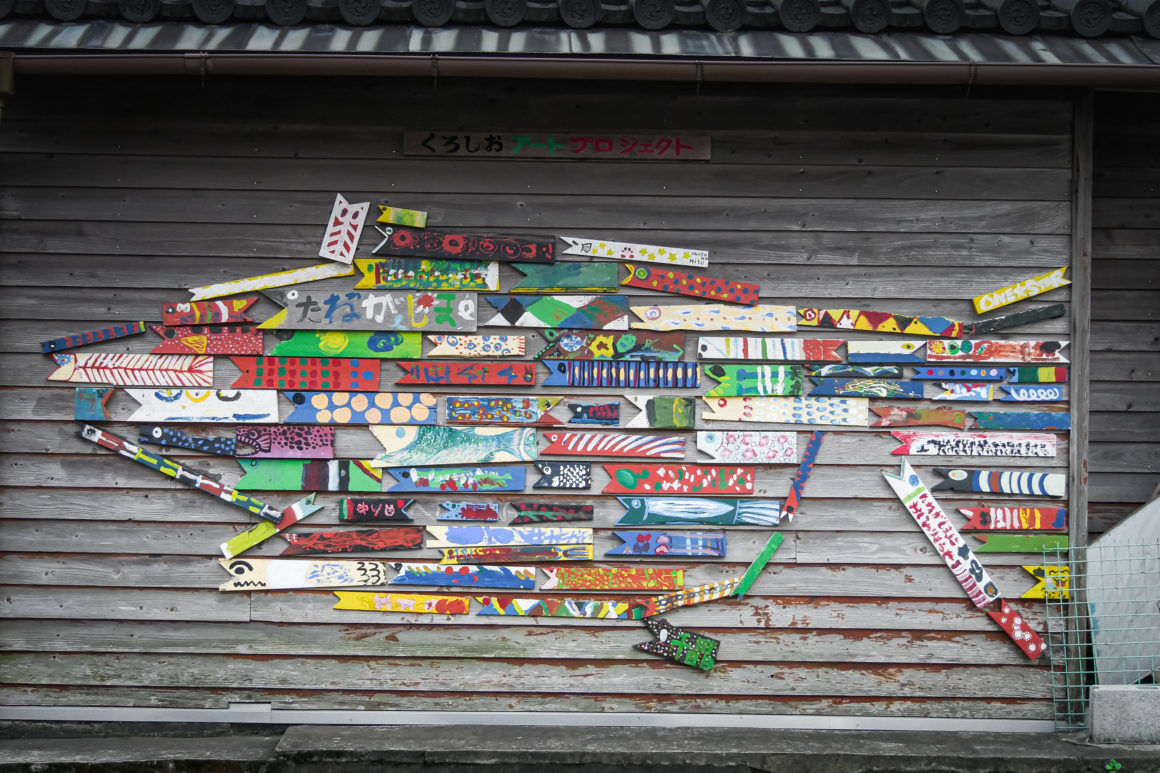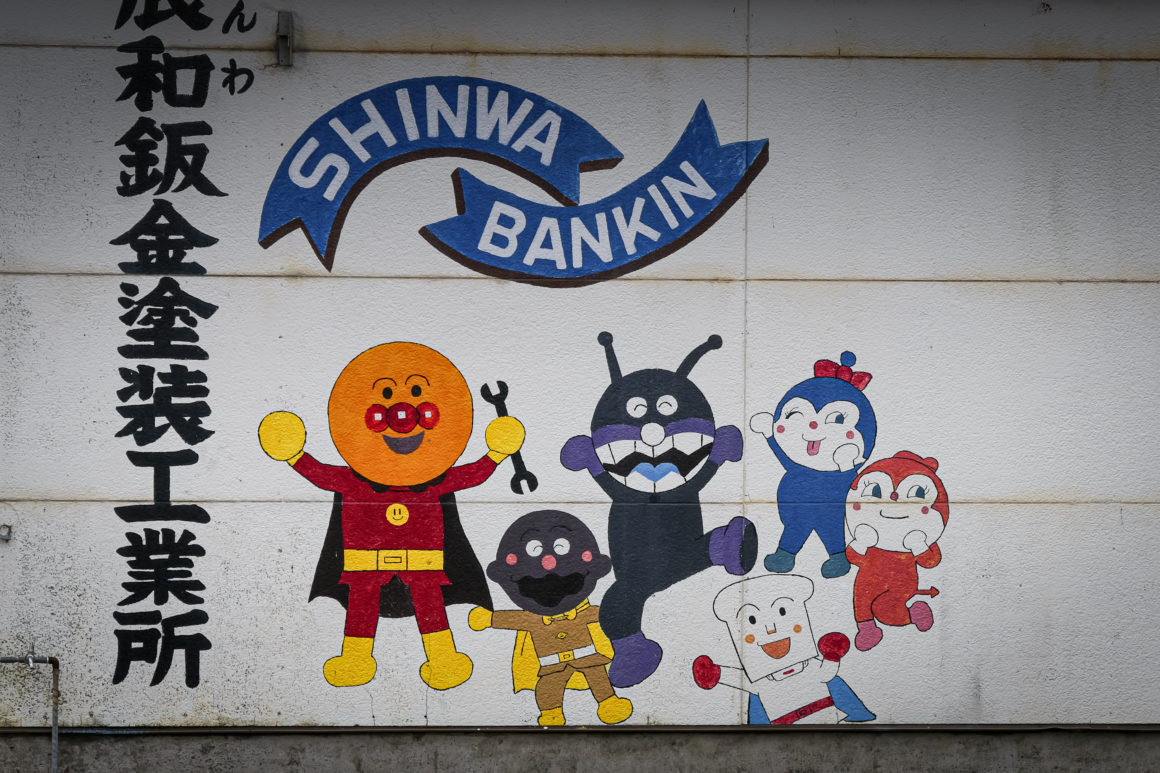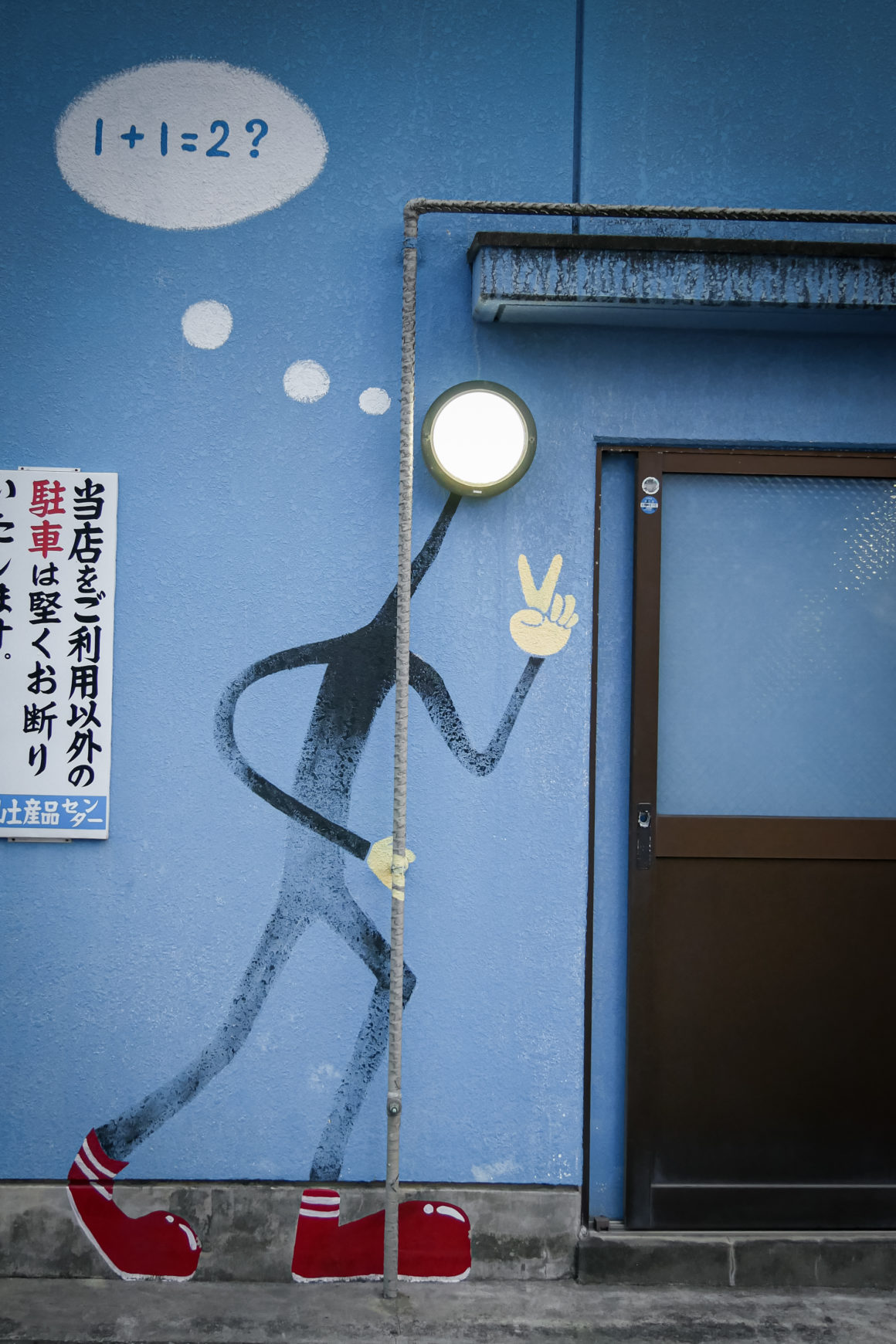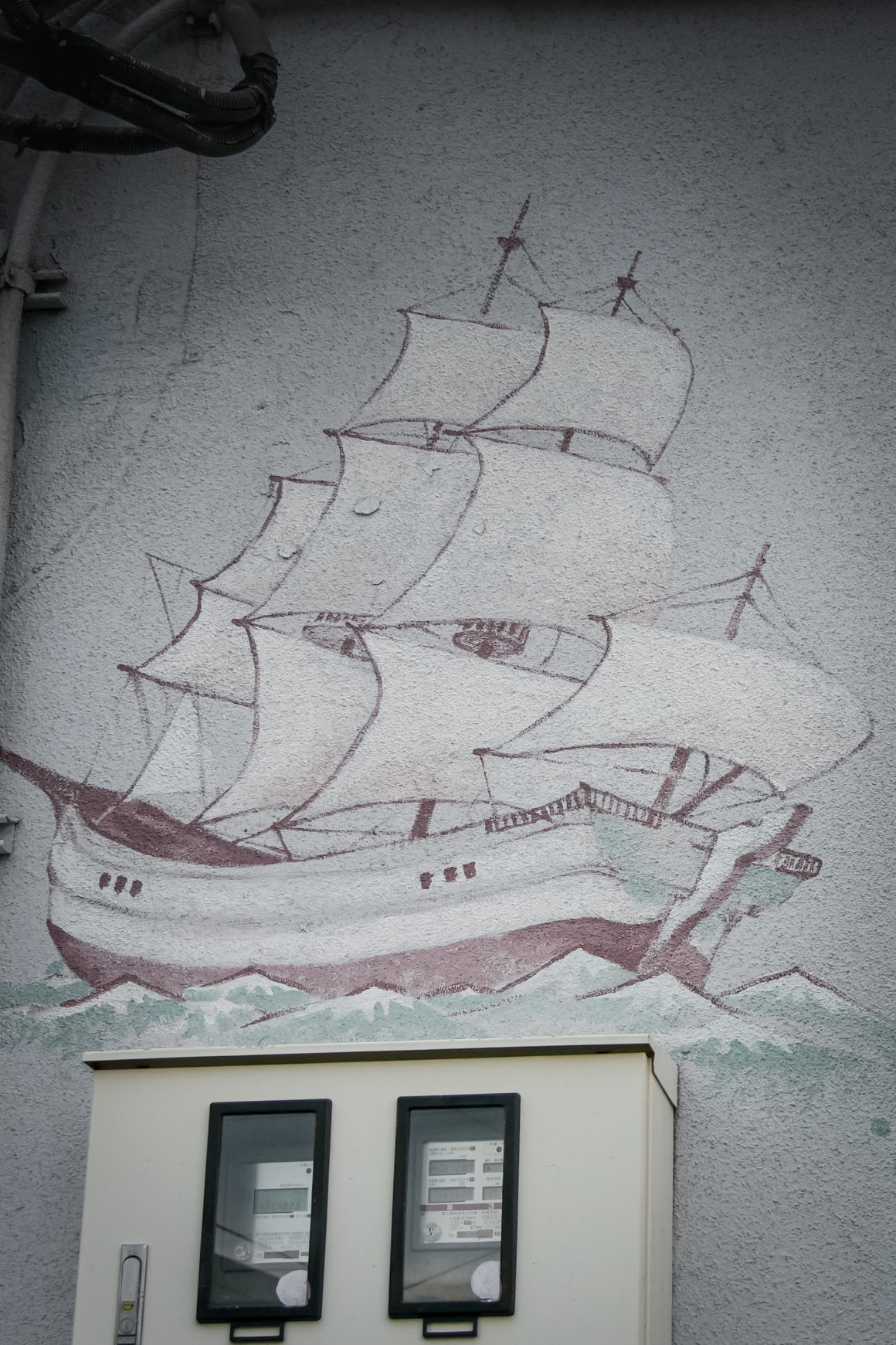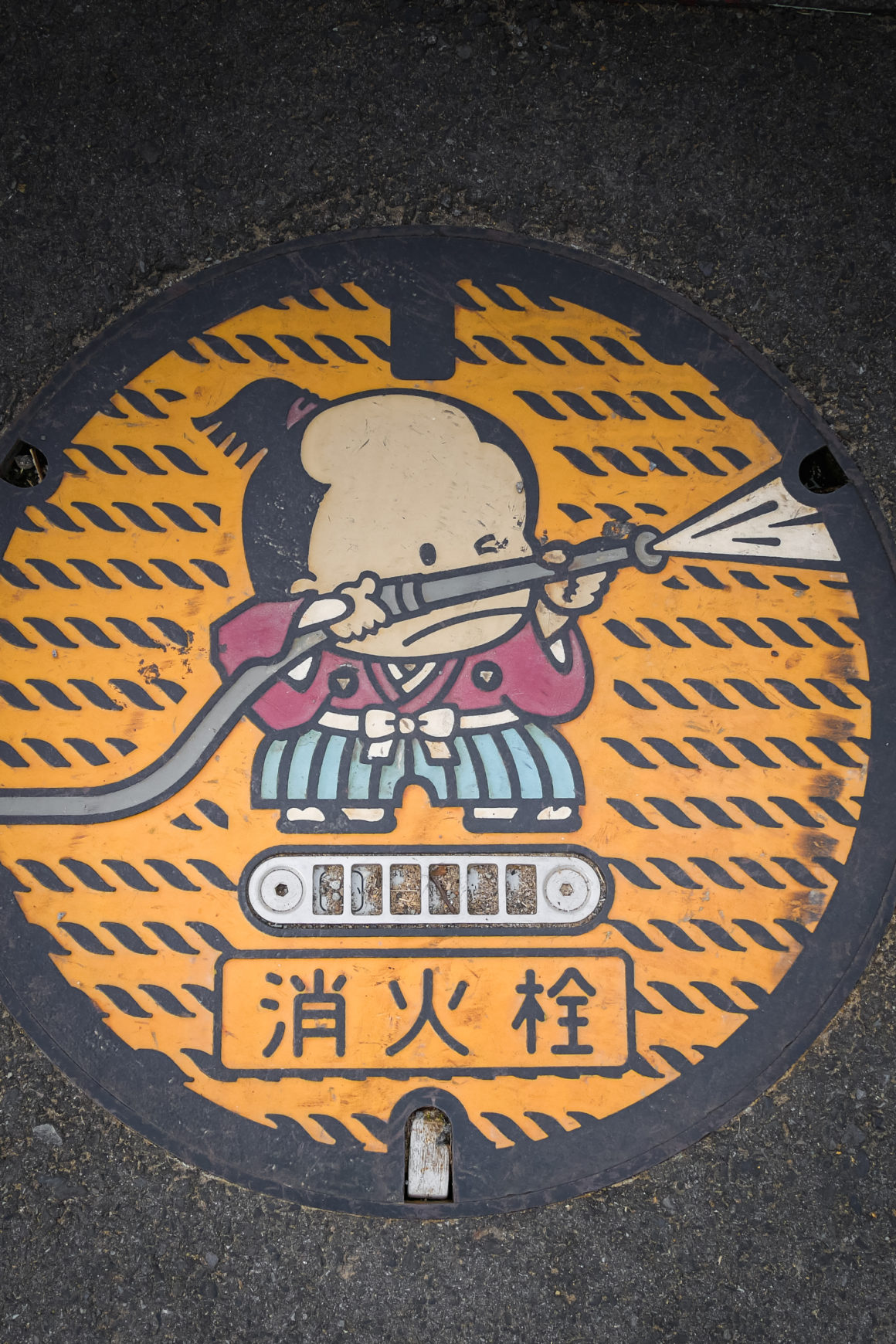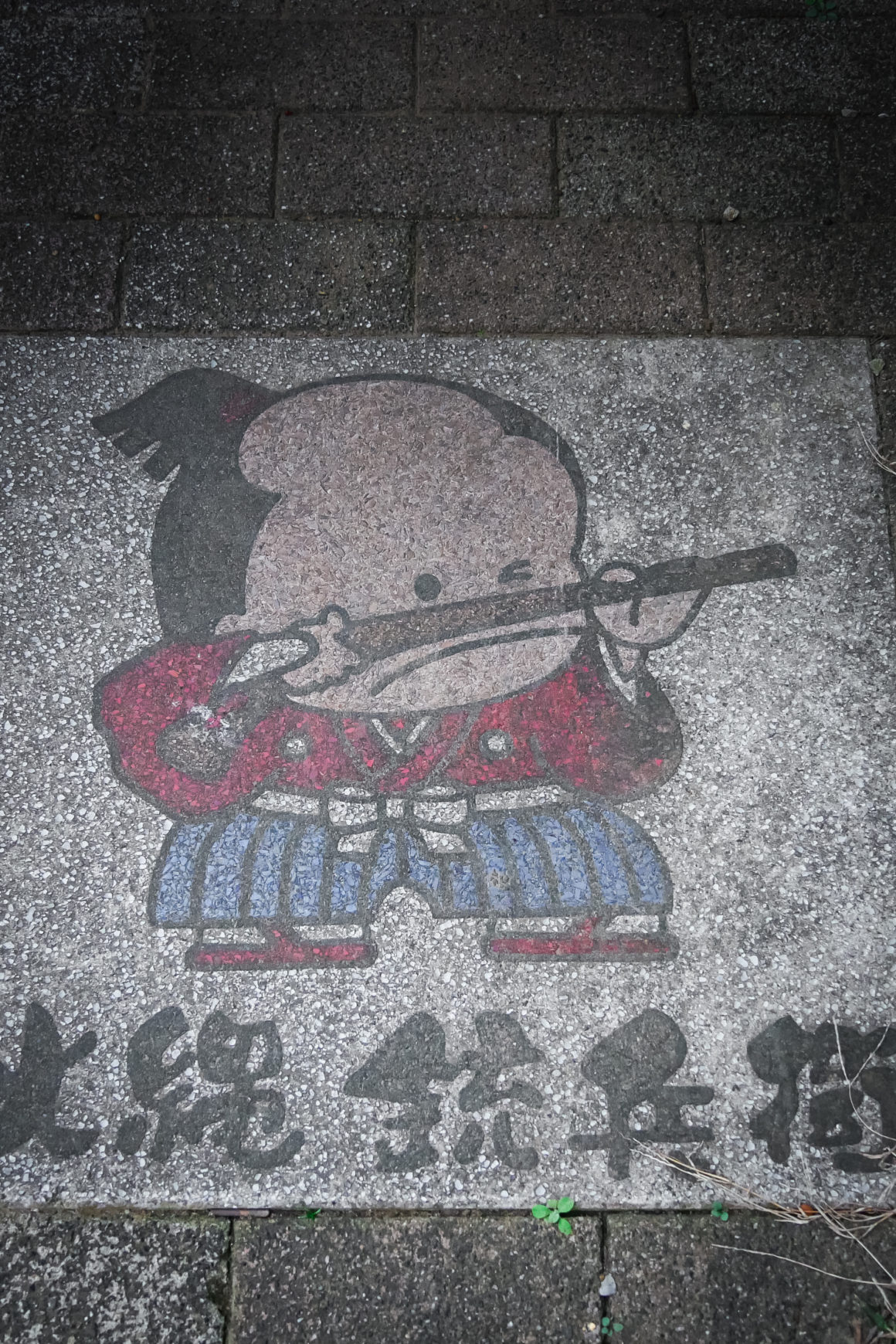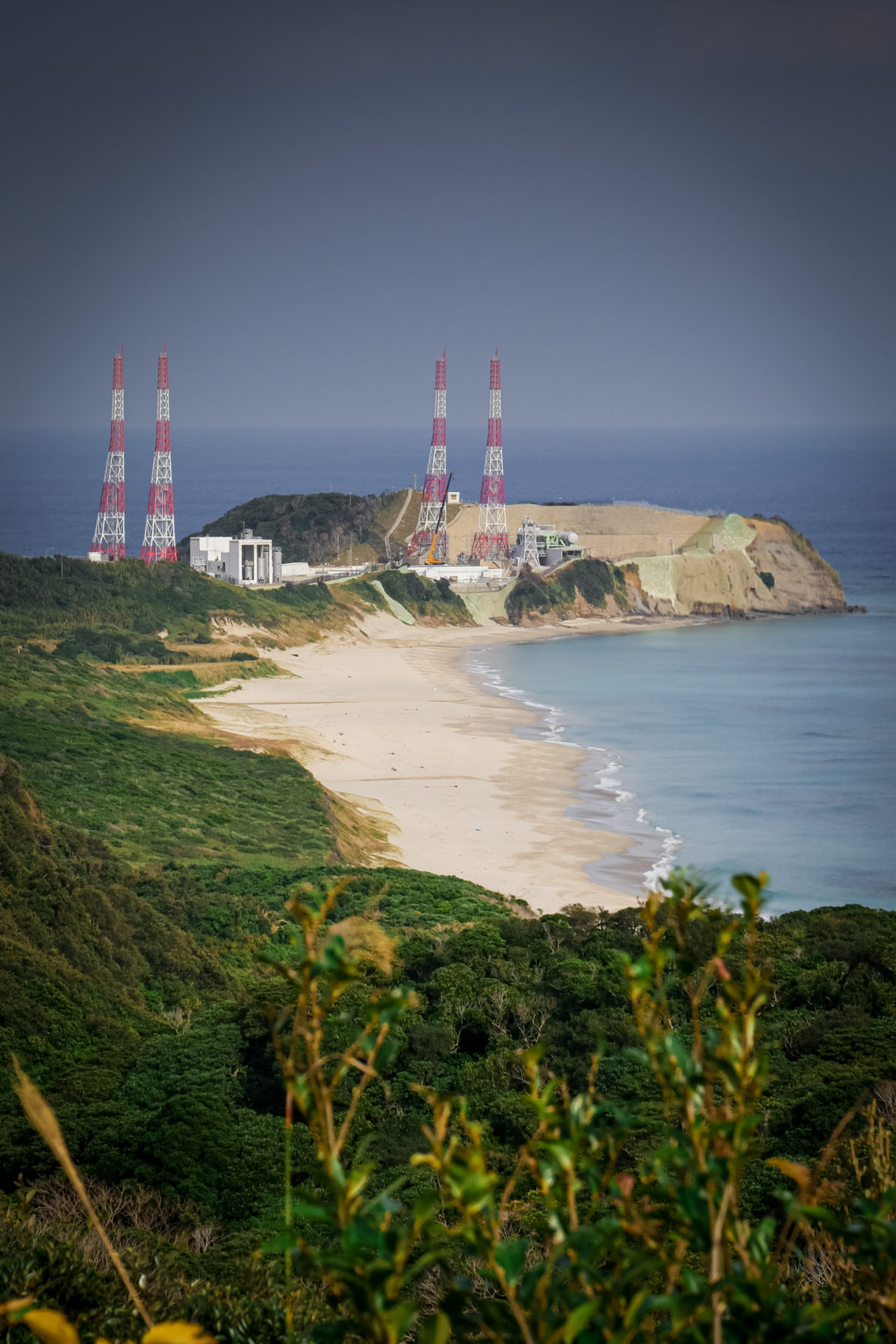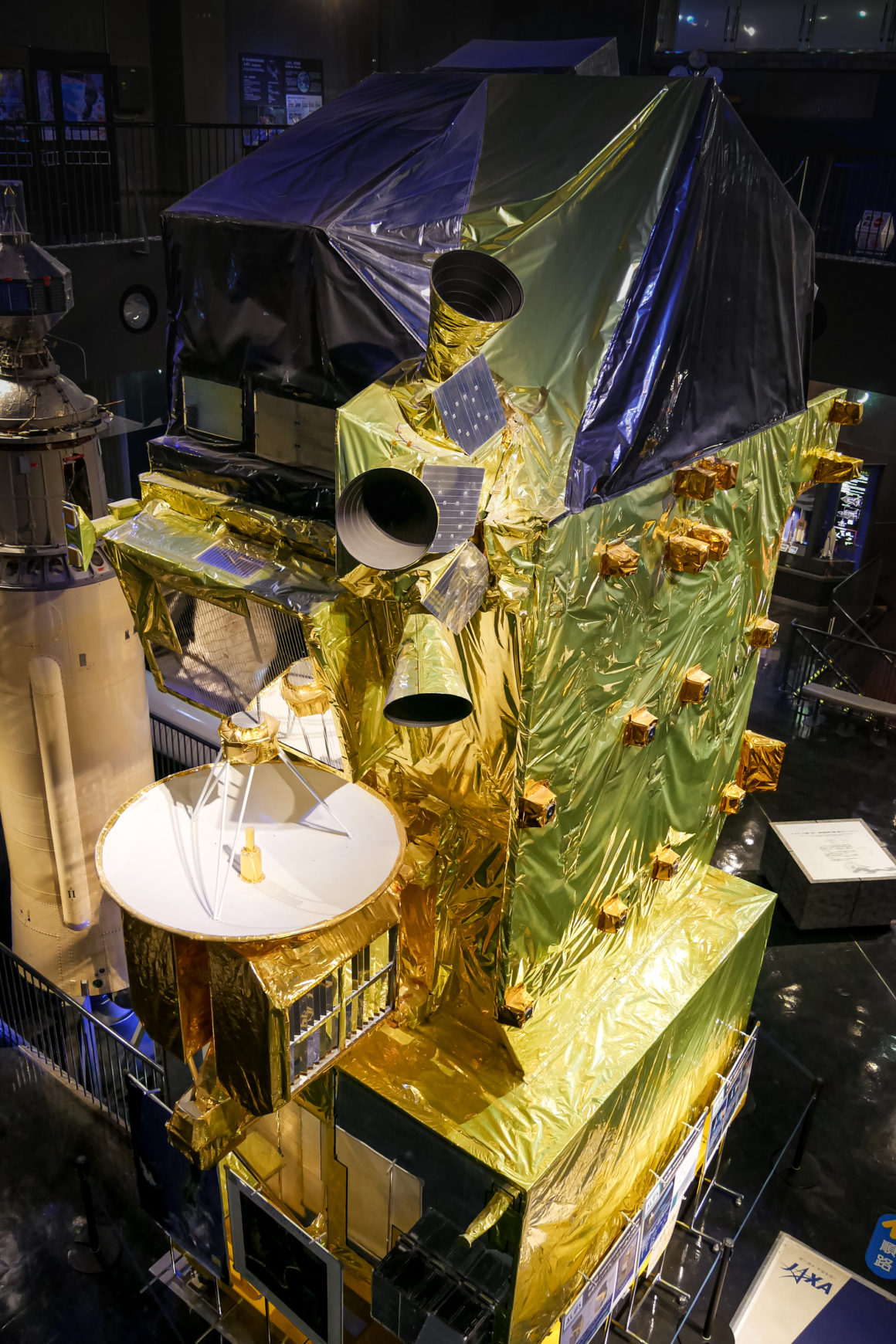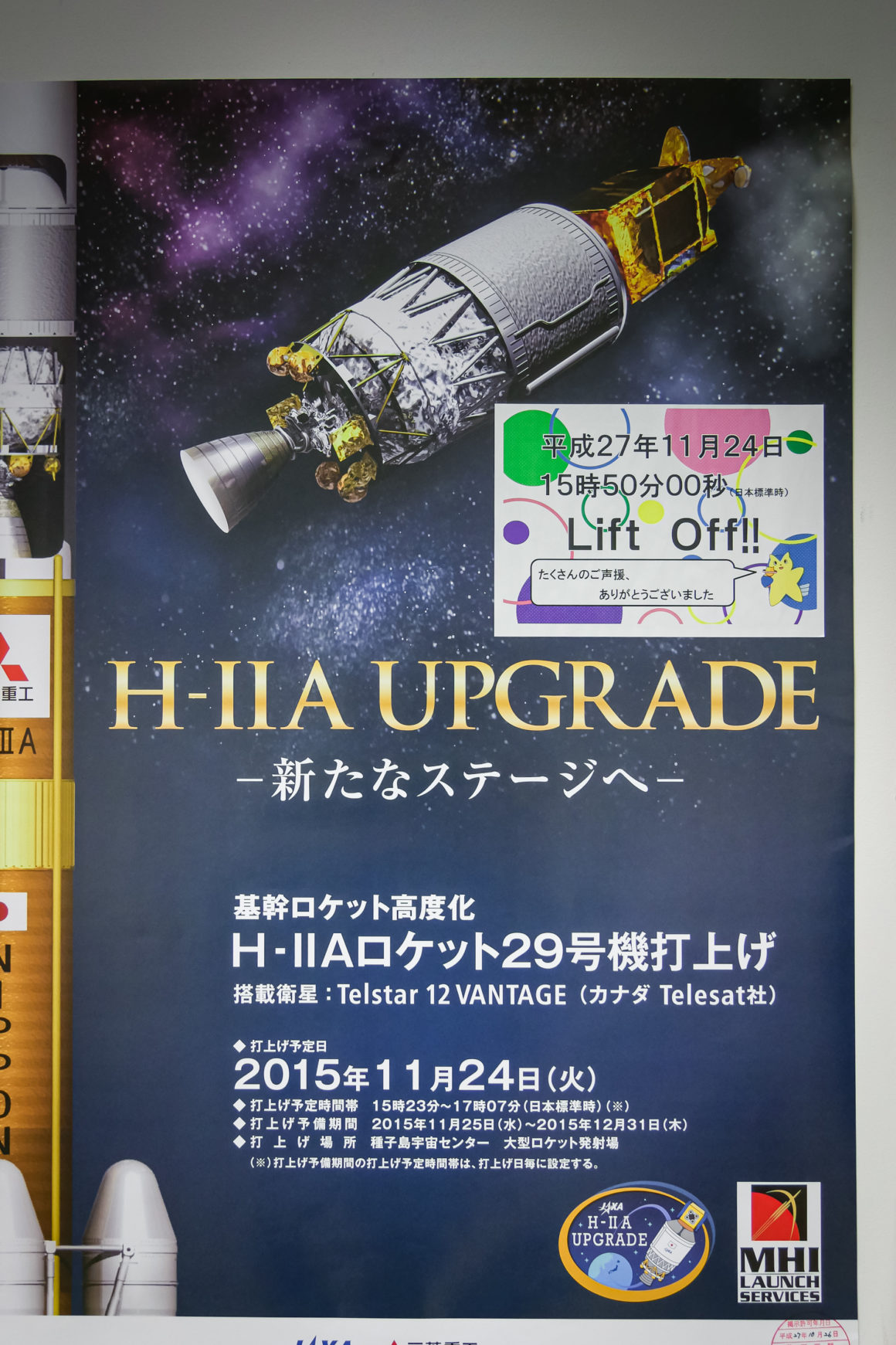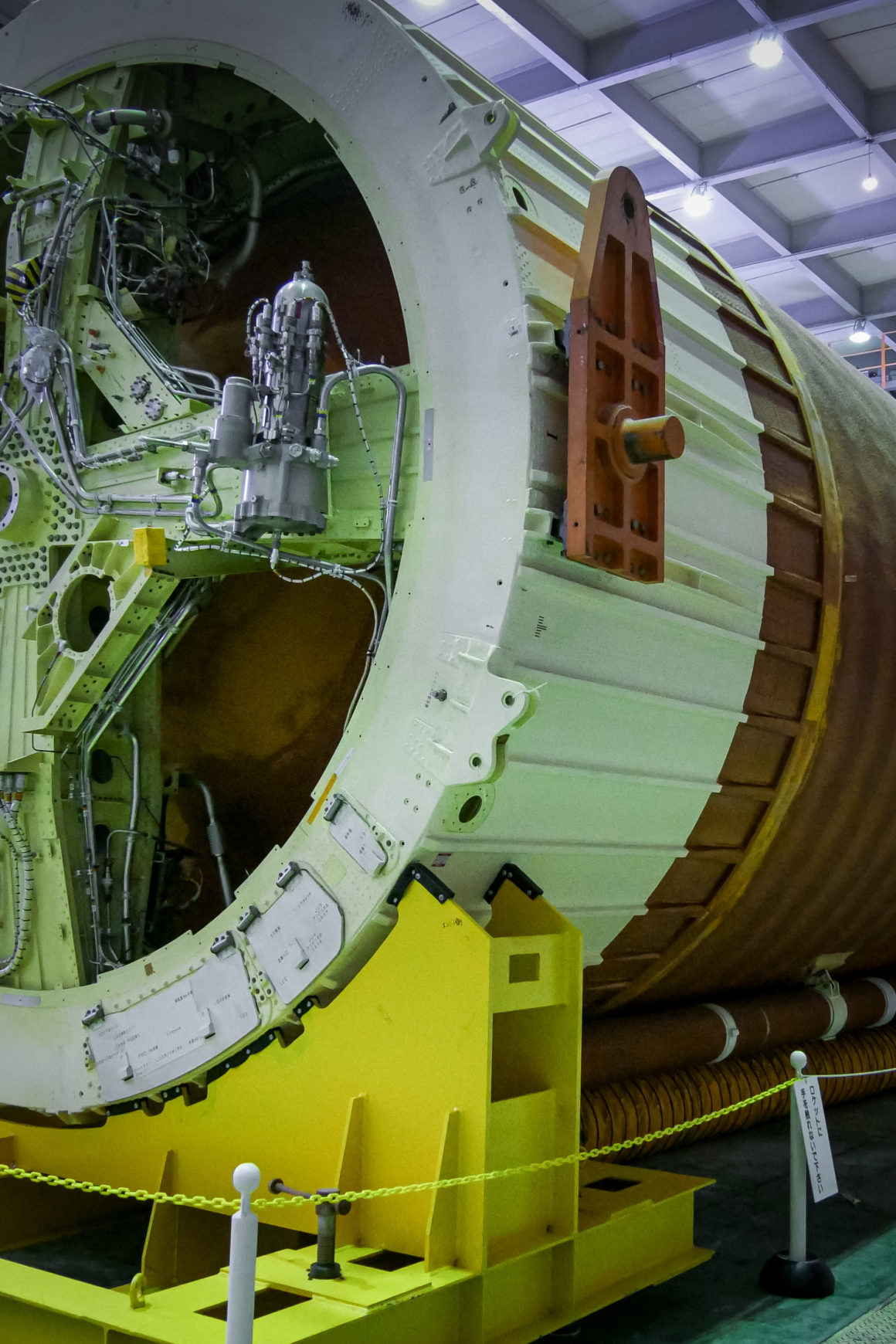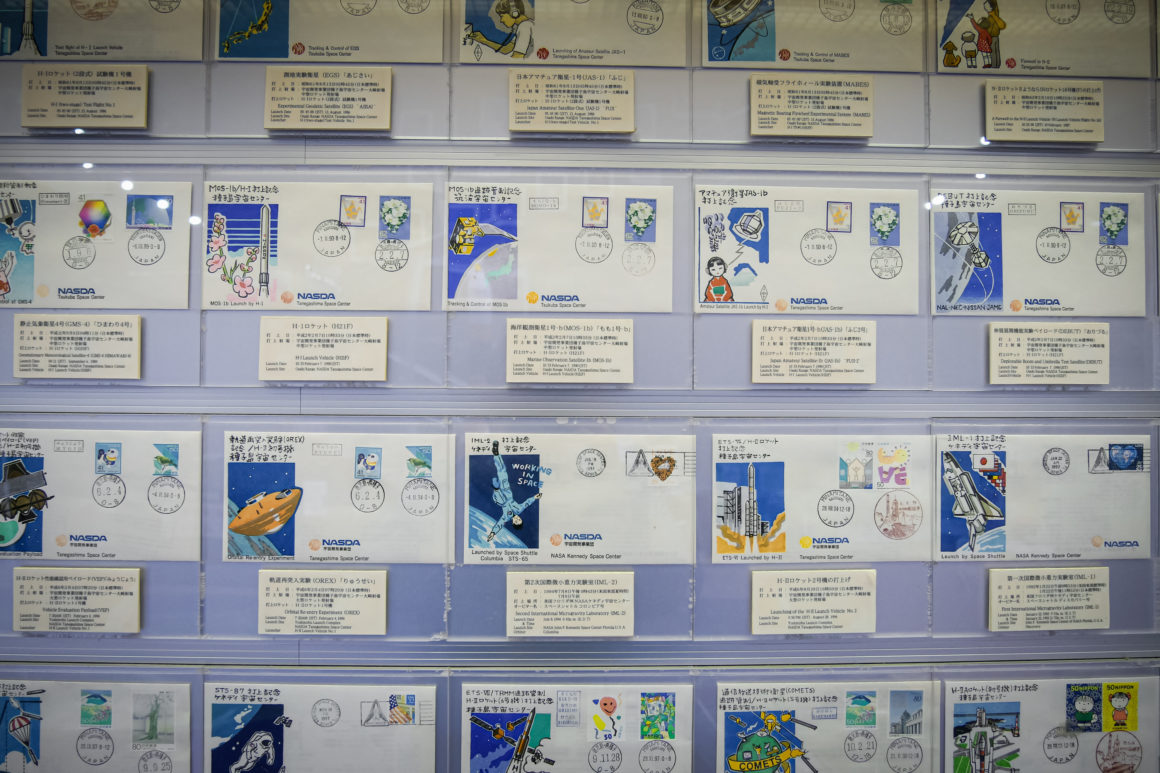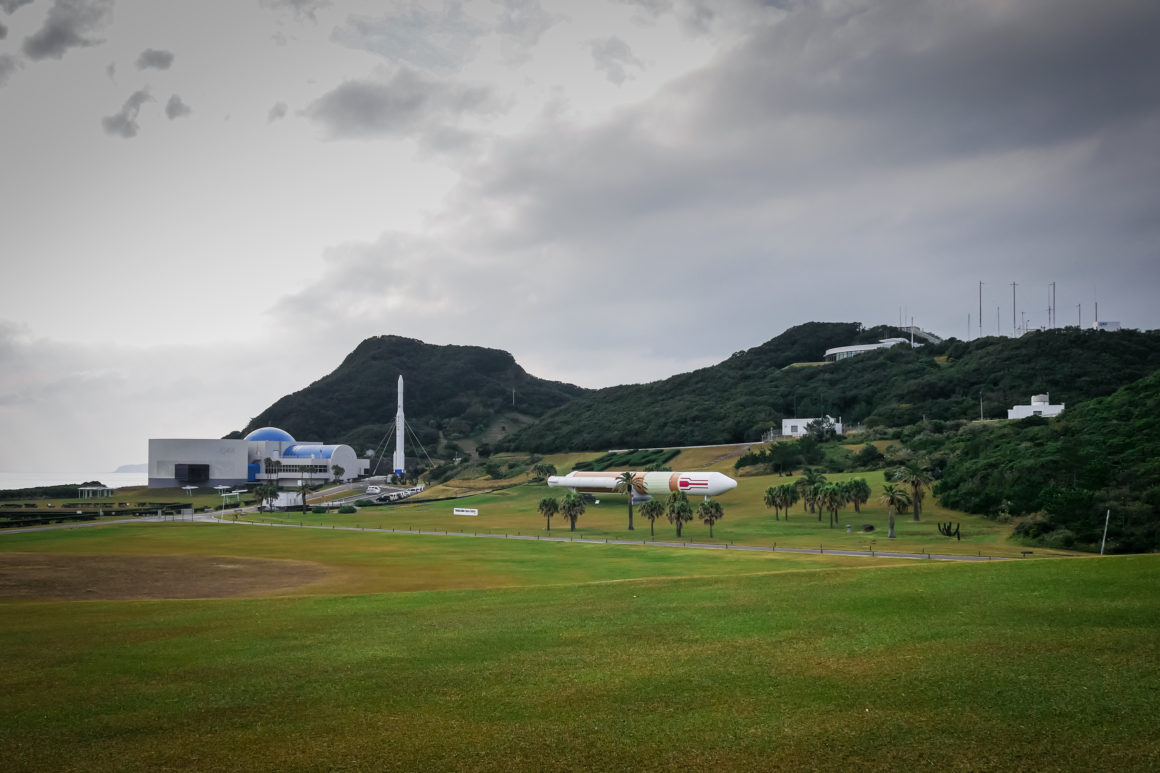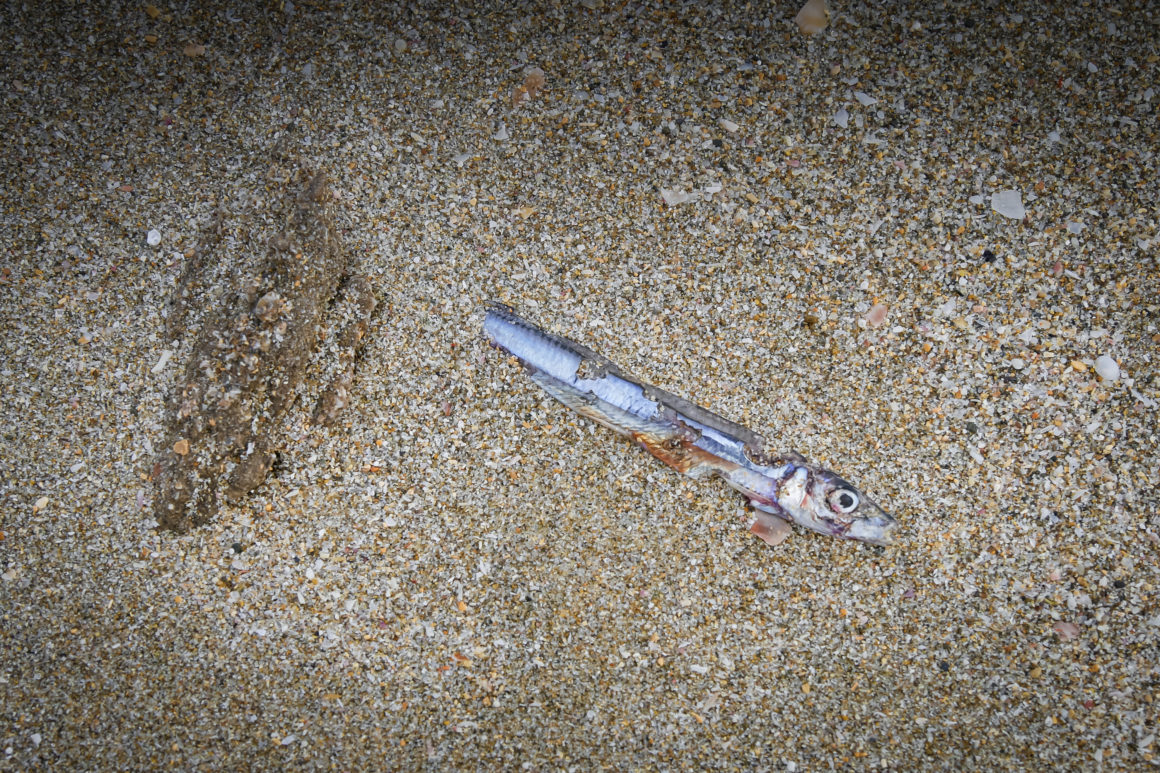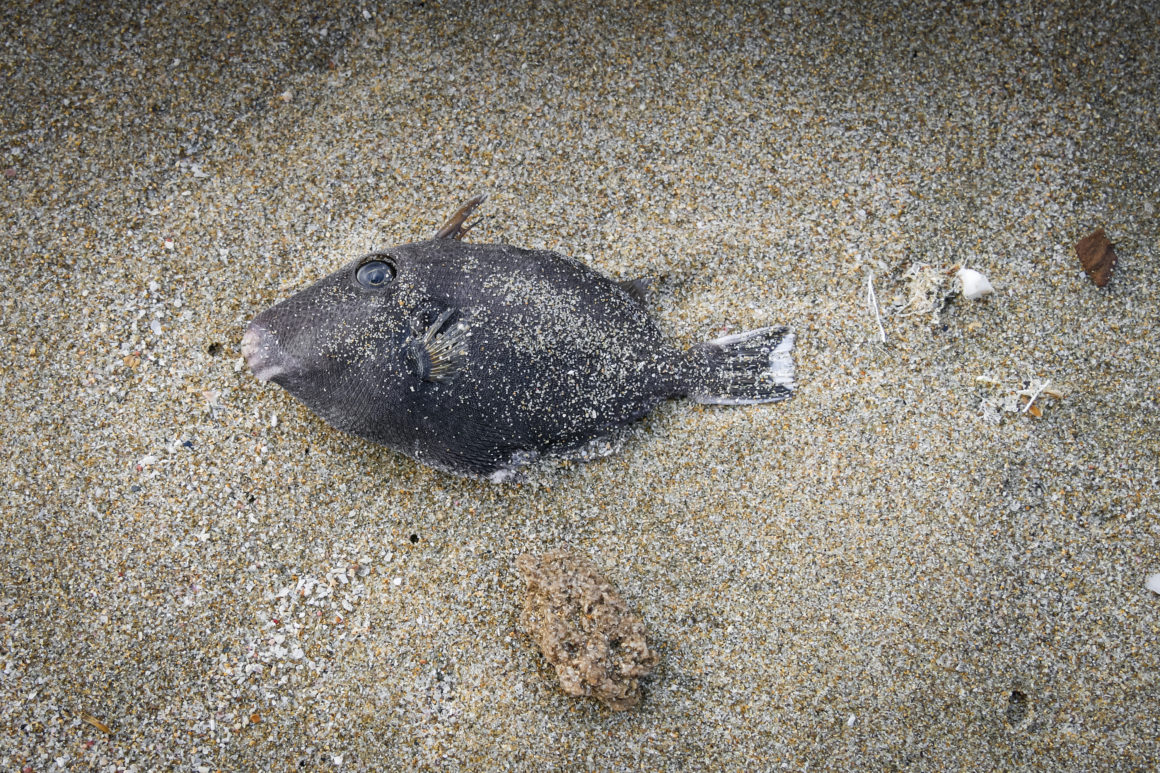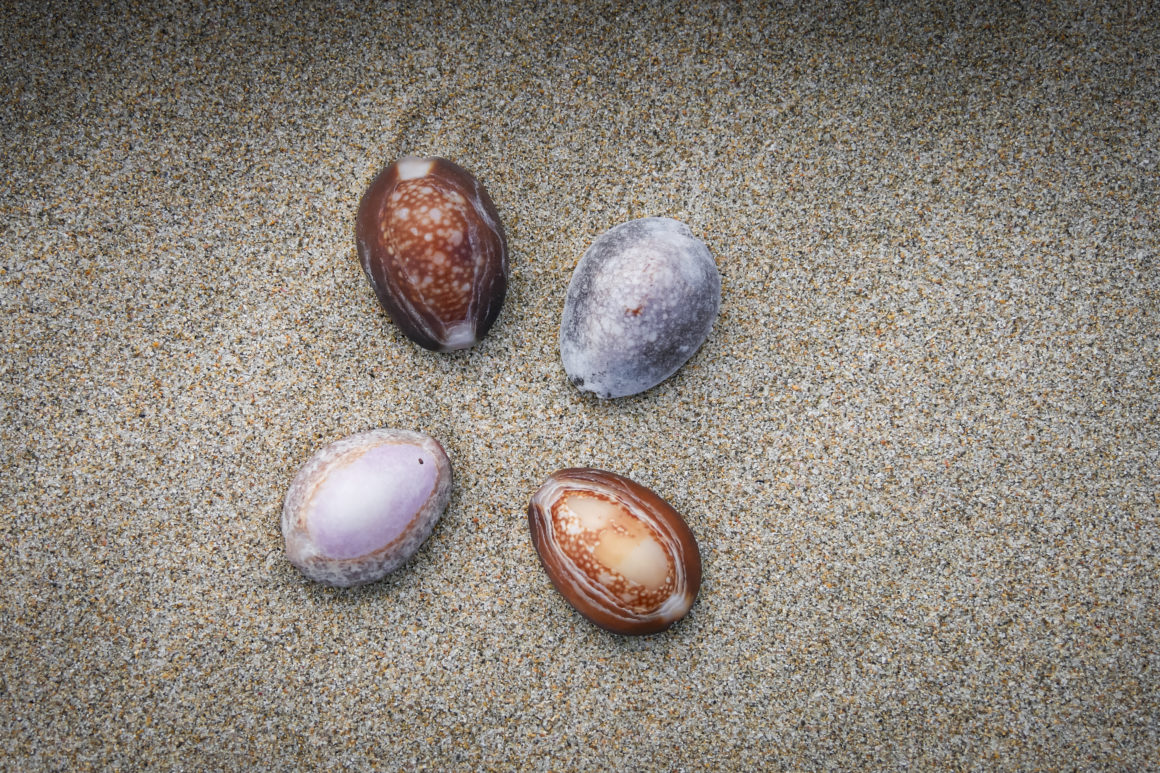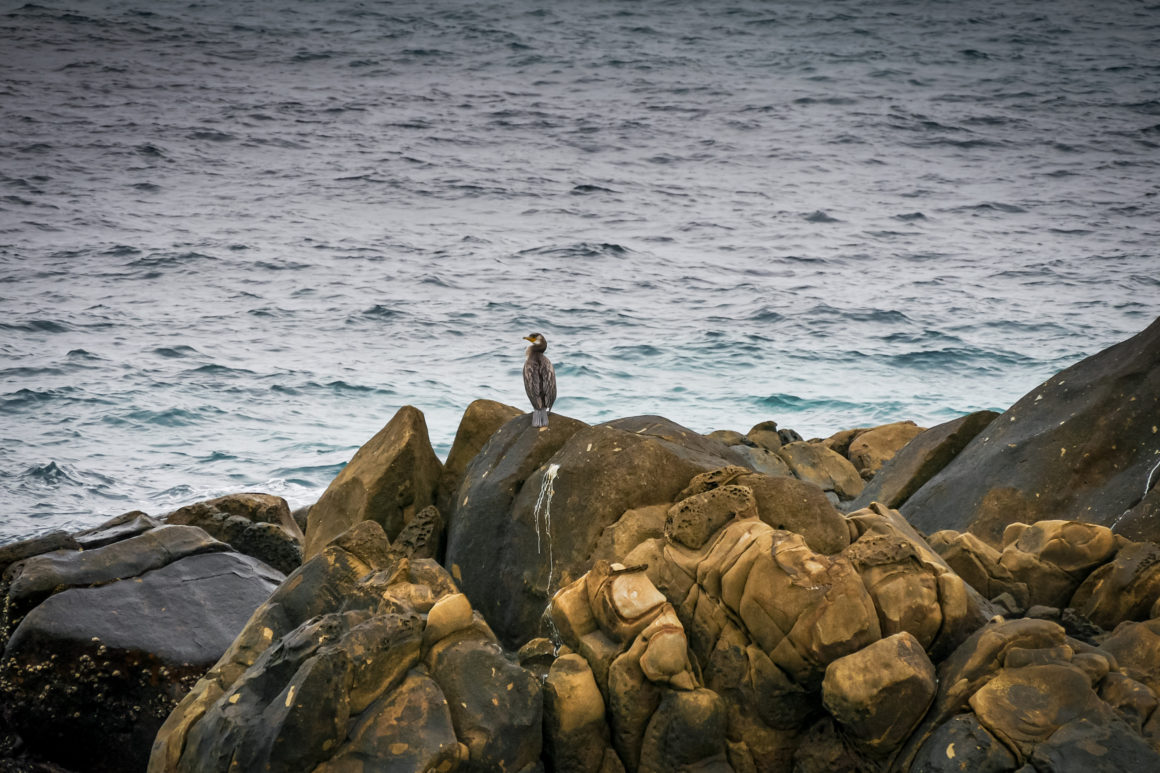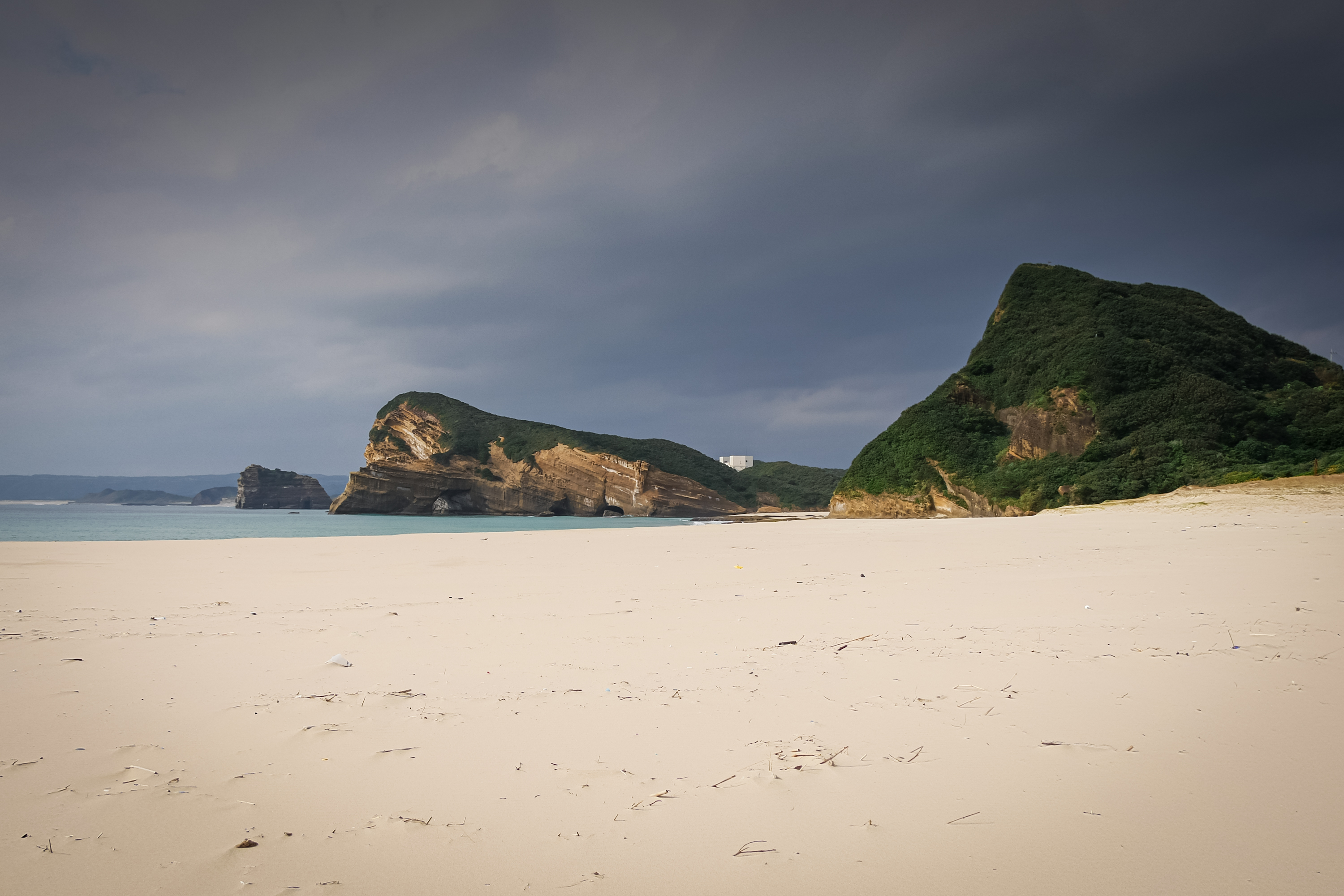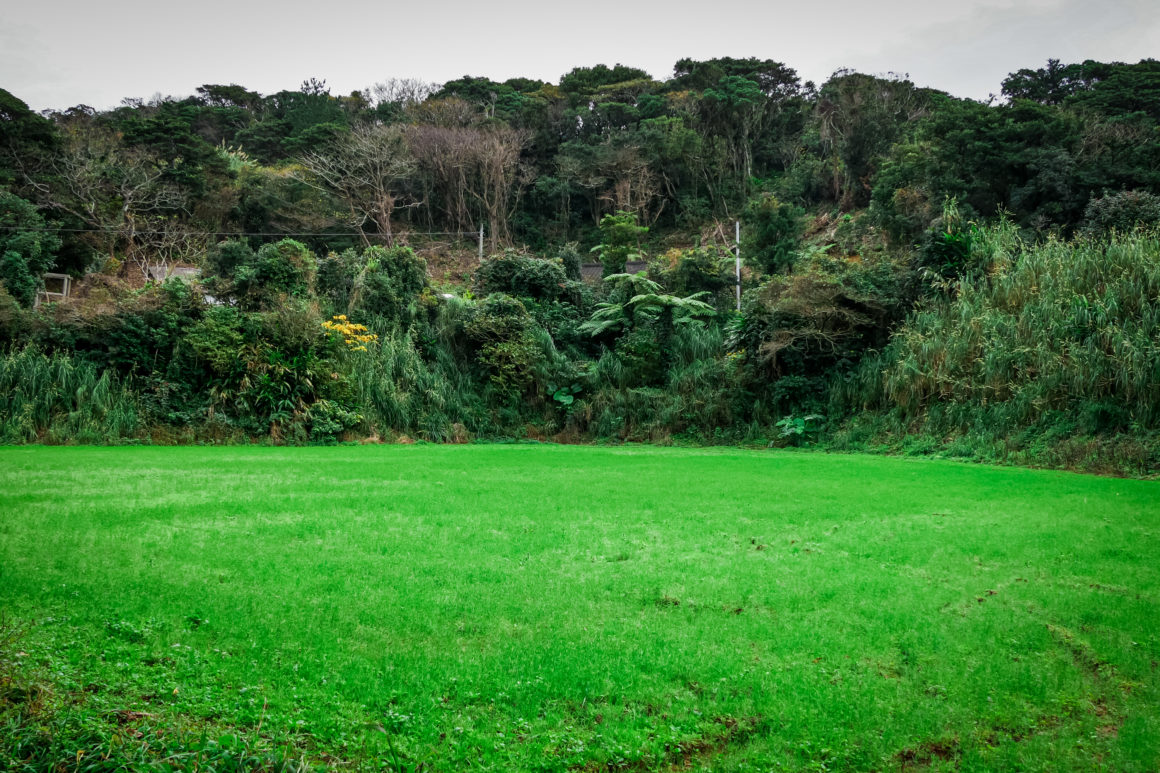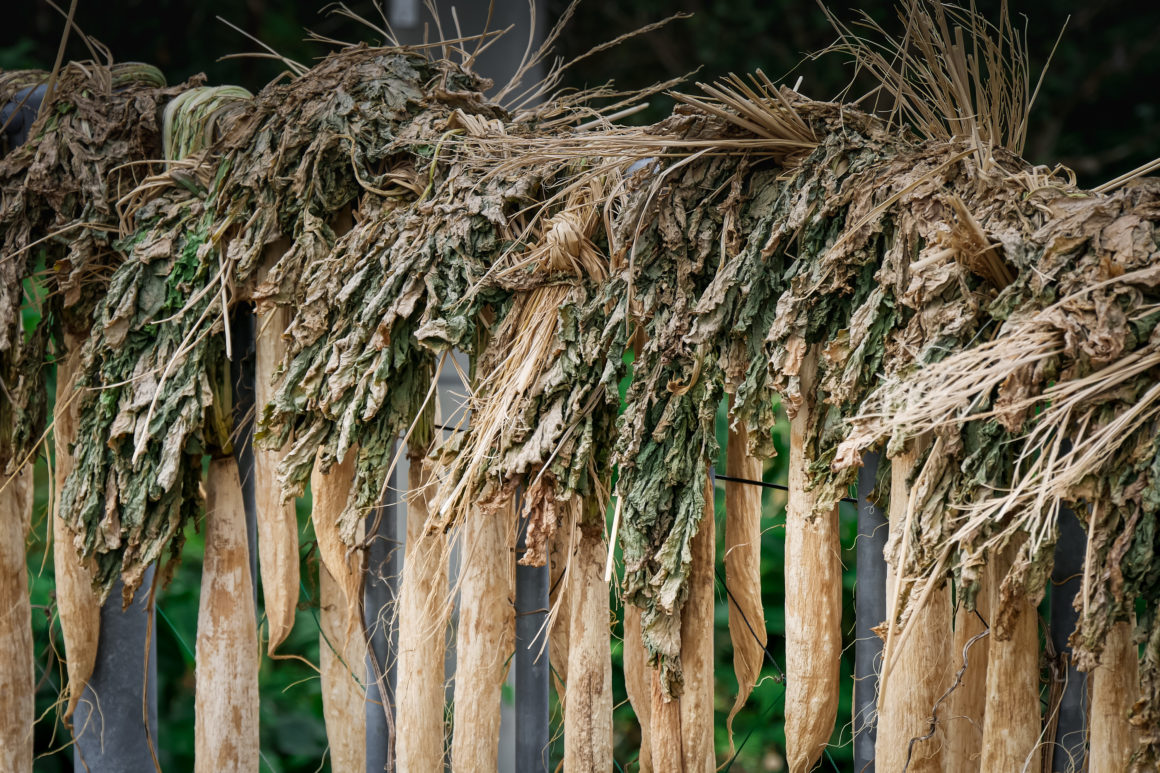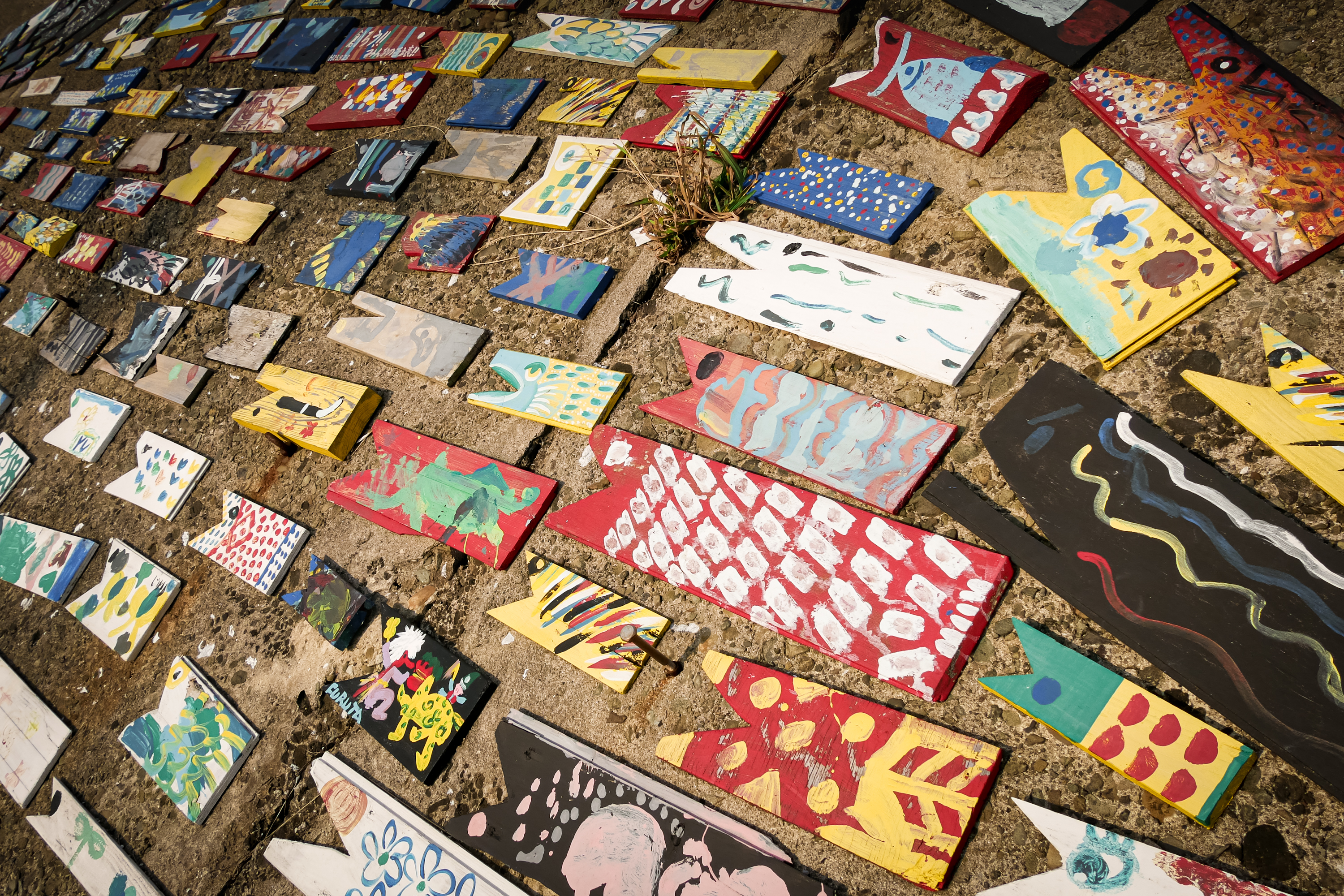DISPATCH
Friday January 8, I leave Yakushima on a rough sea. The two hour ride on an old cargo ferry is a real ordeal for my stomach. The boat swayed on all sides, sometimes oscillating with an amplitude of 3-4 meters. Suffice to say that the boat is moving a lot! With each swing I see through the portholes the horizon tilts and I have the impression that we are going to end up diving into the sea. My stomach hurts.
Tanegashima is a long, narrow strip of land twenty kilometers northeast of Yakushima. Not popular with tourists but popular with surfers, the island has one of Japan’s main space centers, the JAXA or Japanese Aerospace Exploration Agency. It was also at Tanegashima that the Portuguese first introduced firearms in 1543.
I welcome the mainland with happiness. My hostel is located in Nishinoomote, the main port town on the island. I stray a bit in the village while I find my accommodation. I barely have time to buy food before a heavy rain appears again. Definitely the bad weather seems to follow me. The temperature is also dropping and with it my motivation. I still force myself to go out and see the Teppokan museum located right next to my hostel. Dedicated to Tanegashima’s armaments history, culture and natural history, the museum houses an impressive collection of magnificent shells, some of them gigantic, as well as numerous firearms (arquebuses, rifles, pistols, etc.). Some are small prowess of minimalist design. I am alone in the museum. I go out and go see the old samurai house Gessou Tei, whose visit is coupled with the museum. It is freezing cold. The interior is pretty, with a reconstruction of life in the Meiji period (1868 to 1912), small cute figures, some guns and bows, calligraphy and a doll that looks alive. The two grannies who take care of the house offer me a homemade tea accompanied by a snack including hot sweet potatoes. Their skin is purple in color and their flesh is honey yellow. The tea is very good, the best I have drunk so far and the little potatoes are a delight. A gentleman also looking after the house shows me photos from last October of a group of fifteen French people who came to visit the house and participate in activities: calligraphy, archery, dance demonstration and traditional music… I envy them!
My morale a little down, I take refuge in the hostel. It is barely three o’clock. I take the opportunity to process my photos and write my articles. The next day, I am entitled to a few rays of sun. I take some photos of Nishinoomote. The city’s calm and relaxed atmosphere is reinforced by the many small designs and assemblages that line the walls of the town. A gigantic fresco made up of small wooden rectangles stretches along the walls of the port. Representing a rocket, a heart, trees, fish, it seems to have been made in 2014 and is entitled “Mirai no kaze”. Or “The wind of the future”.
Destination, the JAXA space center two hours by bus from Nishinoomote. Located at the south-eastern tip of Tanegashima, the space center, built in 1969, includes administrative buildings, a meteorological complex, launch bases and a museum. The south of the island is absolutely quiet. Some small wooden huts, large fields of rice fields, small hills covered with forests and superb beaches. The park environment is magnificent. I go around the museum, admire the scale models and the life-size models of the rockets, rave about a real satellite and stroll on the magnificent Takesaki-kaigan beach. Very few people, a little bit of sun, a peaceful atmosphere, the squawking of birds and a magnificent environment. That is enough for my happiness.
At 1:30 p.m., I take part in the guided tour of the space center, which provides access to some facilities that would otherwise be inaccessible. Of course the visit is in Japanese, but I am entitled to ten pages of explanations in English and one of the ladies walking around speaks English. We go see an observation point allowing us to see the launch bases, the control center and a hangar where one of the real H-II rockets is stored. The size of the machine is impressive! By talking with the English speaking guide, I learn that the last launch took place in October 2015 and that the next one will be on February 12, 2016. For the year 2015, five rockets were sent into space. The goal is the deployment of satellites (military, meteorological, space probes …). For the year 2016, they expect to rise to ten. Back at the museum, I have an hour before the bus returns. I spend it strolling on the beach looking for shells and enjoying the calm.
Extract of a video about the base launch of JAXA
Extract of the guided tour
The next day, Sunday January 10, I rent a bike for the morning and go for a ride around Nishinoomote. The road is filled with very tiring climbs, but the return is then a well deserved exhilarating descent. I leave Tanegashima in the early afternoon, to return to Kagoshima on a quiet sea, to the relief of my stomach. Arriving on land, I take a bus to the airport an hour from central Kagoshima. The traffic jams will make the journey longer and I arrive at my hotel near the airport around 7:00 p.m. I spend my Monday January 11 quietly in my room watching the rain fall and waiting to fly the next day to my next destination: Okinawa.

